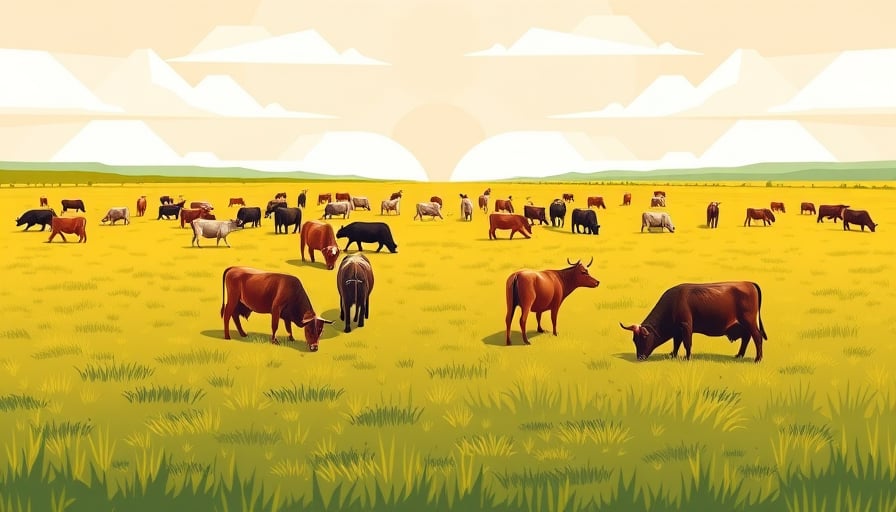Tyson Foods Inc. Restructures Beef Operations Amid Sustained Cattle Shortage
Tyson Foods Inc. (TSN) announced a comprehensive restructuring of its beef production network, including the planned shutdown of a processing plant in Lexington, Nebraska. The move comes against the backdrop of a prolonged decline in U.S. cattle supplies, a deficit that has not been seen at this level in more than a decade.
Operational Rationale
- Supply Constraint – Tyson cited the current cattle shortfall, projected to last at least two additional years, as the primary driver behind the plant closure. The company’s internal modeling indicates that sustaining current beef output would require sourcing additional cattle at a premium, eroding profit margins.
- Capacity Reallocation – The Lexington facility, which processed approximately 30 % of the region’s beef inventory, will be decommissioned and its assets reallocated to higher‑margin pork and chicken units. Tyson’s corporate communications emphasized the goal of concentrating resources on segments with more robust supply chains and higher growth prospects.
- Cost Discipline – The plant closure is part of a broader cost‑control initiative that has already yielded $150 million in savings in 2024. Analysts estimate that the restructuring will reduce operating expenses by an additional $80 million over the next 18 months.
Financial Implications
| Item | 2024 (est.) | 2025 (proj.) | 2026 (proj.) |
|---|---|---|---|
| Revenue | $18.4 bn | $18.1 bn | $17.8 bn |
| EBITDA | $3.2 bn | $3.0 bn | $2.9 bn |
| Net Income | $1.9 bn | $1.7 bn | $1.6 bn |
| Free Cash Flow | $2.1 bn | $2.0 bn | $1.9 bn |
The projected decline in revenue is modest, reflecting Tyson’s expectation that the reduction in beef output will be offset by increased pork and chicken volumes. However, the erosion of EBITDA margin—from 17.4 % to 16.7 %—highlights the cost intensity of beef production amid supply constraints.
Regulatory and Competitive Landscape
- Regulatory Scrutiny – The Department of Agriculture’s beef pricing and supply monitoring programs will likely intensify scrutiny of Tyson’s decision to shut down a key facility. Any perceived anti‑competitive impact on local markets could trigger investigations by the Federal Trade Commission.
- Competitive Dynamics – Tyson’s rivals, such as JBS USA and Cargill, have maintained larger beef processing footprints and diversified feedlot operations, positioning them better to weather supply shocks. Tyson’s reduced presence in the Midwest may cede market share to these competitors, particularly in high‑margin premium cuts that thrive on local supply chains.
Overlooked Risks and Opportunities
| Risk | Potential Impact | Mitigation |
|---|---|---|
| Supply Volatility | Continued cattle scarcity could force Tyson to source at even higher prices, compressing margins further. | Invest in long‑term cattle contracts and alternative protein sources (e.g., plant‑based beef analogues). |
| Regulatory Backlash | Anti‑trust investigations could hamper future expansion plans. | Engage proactively with regulators; maintain transparent reporting. |
| Supply Chain Disruption | Closure could disrupt ancillary suppliers (feed, transport, equipment). | Negotiate transitional service agreements and support local suppliers. |
| Brand Perception | Consumers may perceive the closure as a downgrade in quality or availability. | Strengthen marketing around sustainability and supply chain resilience. |
| Opportunity | Expected Benefit | Implementation |
|---|---|---|
| Diversification | Lower dependence on beef; higher-margin pork and chicken streams. | Scale processing capacity; invest in value‑added product lines (e.g., ready‑to‑cook meals). |
| Vertical Integration | Control over cattle sourcing could reduce price exposure. | Acquire or partner with feedlot operators; explore cattle‑breeding ventures. |
| Technology Adoption | Automation can offset labor shortages in remaining plants. | Deploy AI‑driven sorting and packaging systems; monitor ROI over 3–5 years. |
Skeptical Inquiry: Are We Seeing the Full Picture?
While Tyson’s public statements emphasize cost savings and strategic realignment, industry analysts caution that the company’s financial disclosures may understate the long‑term impact of a shrinking beef supply. A deeper dive into commodity hedging positions, inventory levels, and regional pricing dynamics suggests that Tyson could face significant margin erosion if cattle prices rise unexpectedly. Moreover, the company’s exit from a key Midwestern market may open opportunities for competitors to consolidate their dominance, potentially eroding Tyson’s market share in the long run.
Conclusion
Tyson Foods’ restructuring of its beef operations reflects a strategic response to a sustained cattle supply deficit, yet it also exposes the company to a suite of regulatory, competitive, and operational risks. While the company’s shift toward higher‑margin segments offers a potential upside, the broader implications for its financial performance and market position will unfold over the coming quarters. Investors and stakeholders should monitor Tyson’s supply‑chain adaptations, pricing strategies, and competitive maneuvers closely to gauge the true impact of this pivotal restructuring.




